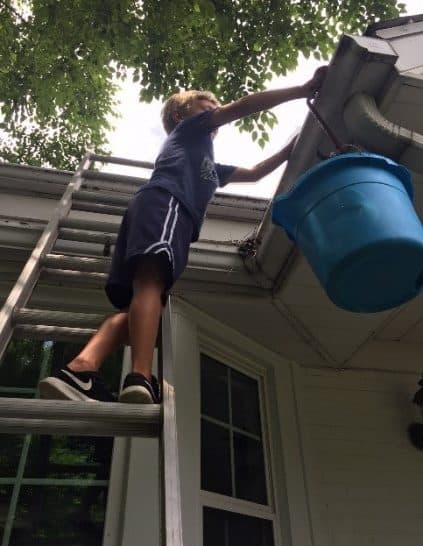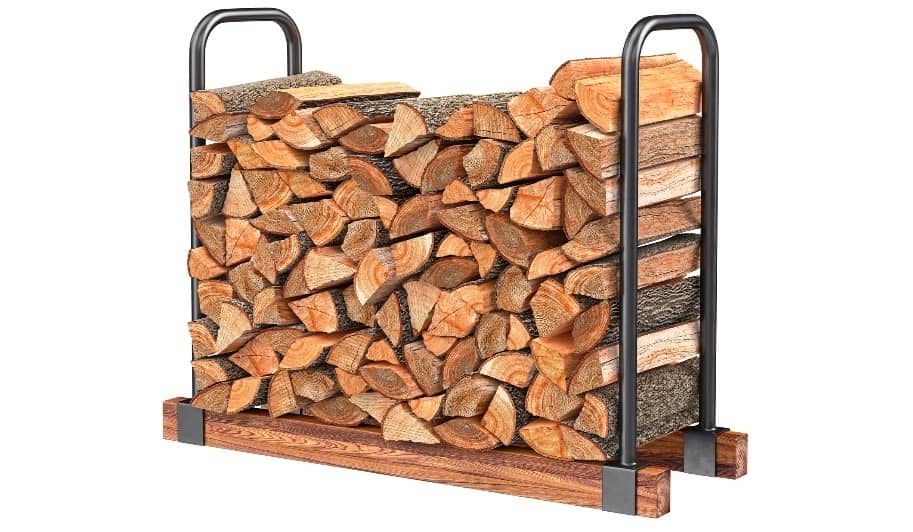How can I prevent termites?
Everyone knows that termites can cause a lot of damage and it can cost a lot of money to get them exterminated. So, it makes sense to do whatever you can to prevent getting termites.
What do Termites Like?
The primary things to think about when trying to reduce the chance of a termite infestation are moisture and wood.
The termites we deal with are Subterranean Termites which primarily live in the soil and need moisture to survive. Their primary food source is wood.
Wood – Beautiful, Tasty Wood!
In nature, the wood termites feed on is usually from dead trees, branches that have fallen to the ground and tree stumps. In a forest environment, termites are actually considered beneficial insects because they decompose wood from dead trees and return the nutrients to the ecosystem – similar to the benefits of earthworms.
But, if you are reading this article, you probably aren’t considering termites beneficial!
In homes, termites primarily feed on wood – especially damp wood. They will also feed on paper, books and other similar products. Termites are smart. They tunnel through wood without exposing themselves to the air.
We have seen them eat their way through a wall, into a book shelf, and eat the paper out of the book – without exposing themselves to the outside air. Our technician first noticed the damage when they took a book off of the shelf and saw all of the damage that was done.
Moisture – Termites Love Moist Soil!
Termites need moisture to survive and primarily live in the soil. They can survive above ground as long as there is some moisture. Typically, termites that are feeding on the wood in a building will return to the soil at least every 24 hours. Termites will die within a few minutes if they are exposed to the open air.
Things You Can Do to Deter Termites:
Since wood and moisture are what termites need to survive, eliminating both of these as much as possible is the goal. Obviously, wood that is part of your house cannot be removed. But, if you have excess wood on your property, get rid of it. Things like unused wooded swing sets and excess lumber that is not needed are good to get rid of.
At the same time, you can’t keep it from raining but you can take steps to keep water and moisture away from your house. For example:
- Make sure that the ground slopes away from your house.

- Keep rain gutters clean and make sure the down spouts extend far enough away from your house to keep the foundation dry.
- Rain gutters are easy to ignore – most often you can’t see if they are clogged without getting up on a ladder. In this picture though, you can be pretty sure those branches above the roof are dropping leaves that will clog the gutters.
- Another easy way to find out if your gutters or downspouts are clogged is to walk around the house during a heavy rain and see if anything is overflowing.
- Be attentive to any water coming from inside the house such as leaking pipes.
- Use dehumidifiers in damp areas like basements and crawl spaces.
Air circulation is your friend – encourage it. Keep plants away from your house. A 2-3 foot space between your house and plant material will improve air flow which will dry things out after it rains.
Store Firewood as far from your house as possible. And, if you can, stack the wood off of the ground in a rack similar to this one.
This type of rack keeps the logs off of the ground and the wood drier.

This rack would work better if the logs were higher off the ground. 8-12 inches off the ground is preferred. It would also be better if the wood rails were not placed directly on the ground – placing them on cinder blocks would be better.
Also, secure a tarp or boards on top of the stack so rain & snow don’t soak the logs. You don’t need to drape it over the sides of the stack – just blocking the rain & snow from the top does a lot to keep the wood dry.
Wood or Bark Mulch provides a lot of food for termites and it is often moist. If you have wood mulch around your house, it is best to leave a 24” space between the house and mulch. Decorative gravel in this spaces look good and is easy to maintain. See more about our Weed Free Landscape Beds here.
Inspect any floor joists in the basement that you can see – especially where they meet an outside wall. You can’t always see the damage so you should tap it with something like a small hammer or handle of a screw driver to see if the wood sounds hollow or feels soft – either could be a sign that there is termite activity.
Termite Monitoring
Green Giant’s Termite Monitoring program can prevent a lot of termite damage. For a low monthly fee, Green Giant will install and regularly inspect monitoring stations. If you are on Green Giant’s monitoring program, and you experience damage from termites, Green Giant will perform the termite treatment at no charge. Click here for more information on our termite monitoring program.
If you are interested in hearing more about Termite Monitoring, Termite Control or any of Green Giant’s services, please contact us!

Lawn Care
Green Giant Home & Commercial’s Lawn Care services control weeds, build the thickness and density of your lawn and protect it from being damaged by insects and disease, providing you with a great-looking, healthy lawn. We offer fertilization, weed control, liming, insect control, and aeration and overseeding. Visit our Lawn Care page for more information.
Tree Care
Green Giant performs: Proper Diagnosis and Treatment of Tree & Shrub Problems, Insect & Disease Control (including Spotted Lanternfly), and Nutrient Management via Deep Root Fertilization to keep your plants healthy and thriving. Visit our Tree Care page for more information.
Vegetation Management
Green Giant’s Non-Lawn Weed Control services eliminate unwanted vegetation in a wide variety of locations for both residential and large commercial/municipal properties. Areas include fence lines, around obstacles to reduce weed eating, stone/gravel driveways & parking lots, swales, roadside/curbside vegetation management and more. Find more information, visit our Vegetation Management page.
Pest Control
Our full service pest control division provides both Year-Round Service Programs that cover the vast majority of pests that you will encounter and also One-Time Corrective Services for pests such as bees, ants, termites or mice. For more information, visit our Pest Control page.